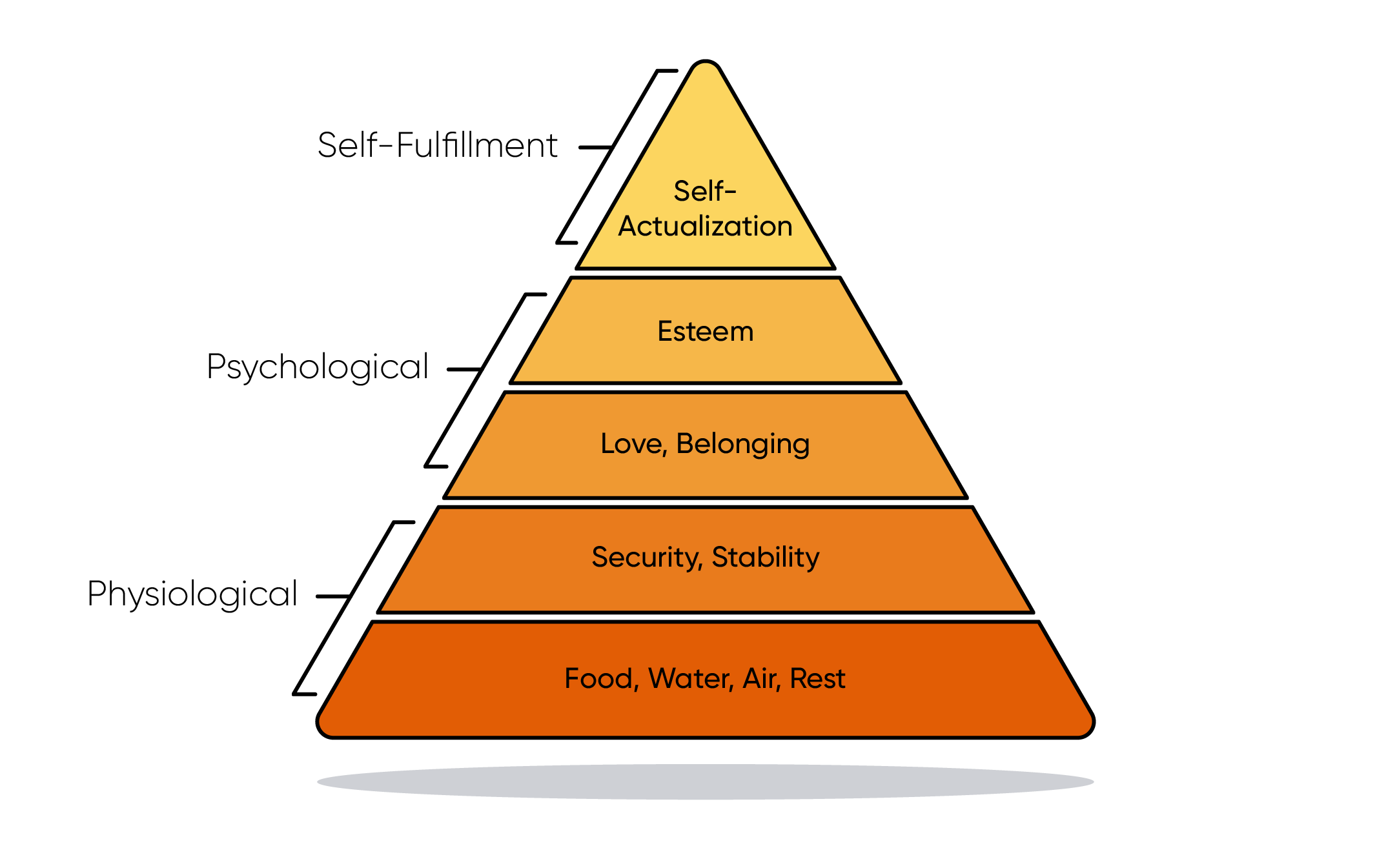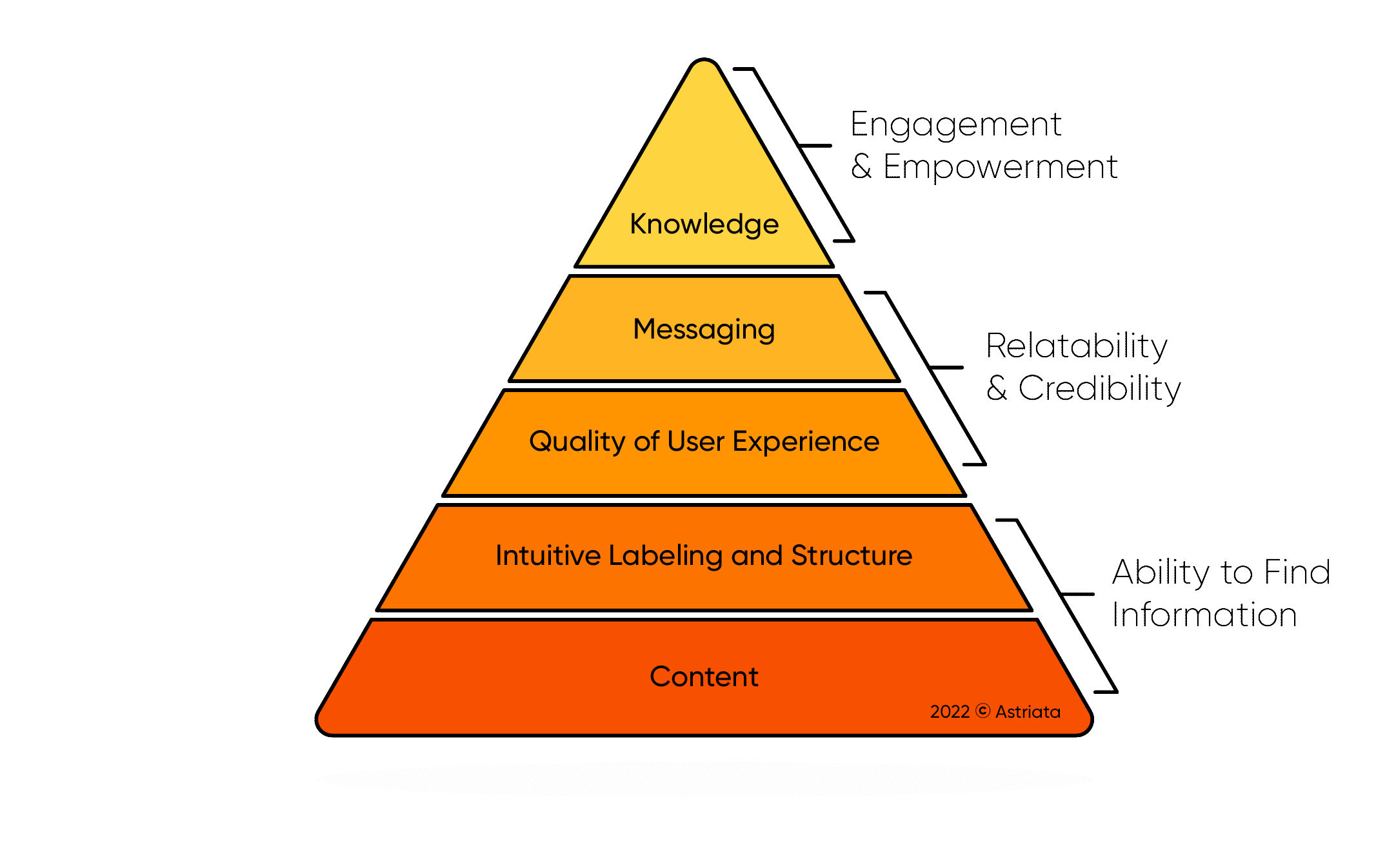
How Maslow’s Hierarchy of Needs Inspires Our Approach to Web Design

February 18, 2021
share this post
If you took a college psychology class, you likely recall Maslow’s hierarchy of needs.
You may not realize, however, that Maslow’s theory influences what we do at Astriata every day – and how we conceptualize web design and development for our clients.
“A Theory of Human Motivation,” published in 1943 by American psychologist Abraham Maslow, suggests that humans must satisfy basic needs like air, food, and water before achieving higher-level needs like self-esteem, respect, and ultimately, what Maslow refers to as “self-actualization,” or the ability to find purpose and fulfillment.
Although scientists have learned a great deal about the human mind and motivation in the nearly 80 years since Maslow developed his theory, his humanistic ideas remain influential today. Here, we look specifically at how Maslow’s hierarchy inspires our work in human-centered web design – and how it can help you achieve great heights as you develop and optimize your own site for a better user experience.
Motivation
As we work on projects at Astriata, we often ask ourselves: What would motivate the user to choose this site? Why would they choose this path over another? Why would a user spend more time on this page? Understanding the user’s motivations plays an important part of how we design content in a website or for a user interface.
Maslow believed that humans are innately motivated to fulfill their basic physical needs before being able to satisfy their psychological needs. Let’s take a closer look at how Maslow’s theory is typically represented.

The pyramid consists of five categories of human needs that ascend from bottom to top: physiological, safety, love/belonging, esteem, and self-actualization. From there, these categories can be grouped in three broader categories: physiological needs, psychological needs, and self-fulfillment needs.
How does Maslow’s pyramid relate?

Covering the basics
Maslow’s bottom tier, which he refers to as physiological or basic needs, represents the fundamental structure of your website. The core essential component of your website boils down to content. The basic structure and labeling of the content in your website needs to be intuitive. Without the ability to find information on your website, your user’s frustration and inability to move forward will undoubtedly hinder their motivation to continue on your website. Basic functionality errors and poor design that does not support usability will have a similar effect.
In the middle
Maslow’s middle tier, psychological needs, represented by safety and belonging, equates to the level of credibility your site does – or doesn’t – convey, along with the degree to which users relate to your content and messaging. A website that is intuitively organized and functions without errors builds trust among users, just as content and messages that communicate clearly and speak to your target audience help them feel a connection with your organization. These collectively create a quality user experience.
Consider:
-
Does the integrity of your content establish your organization as a trusted resource and thought leader?
-
How does your site help users fulfill their innate need for partnership, support, and community?
-
What makes your organization a strong fit?
-
Does your messaging speak to users’ pain points?
-
What solutions can you offer them?
The upper echelons
The next level of Maslow’s hierarchy, self-fulfillment, involves human needs like achievement, confidence, respect, and self-esteem. It is only when users can find the content they need and are able to engage and relate to it that they can see the value of what you offer.
This, in turn, enables them to envision themselves:
-
Becoming empowered with the knowledge to make the right decisions
-
Taking the steps to advance and to reach their goals
-
Fulfilling the task they set out to achieve
-
Making a difference
How can you achieve this?
The most reliable way is through thorough user research and usability testing, where you can gain human insights to understand what motivates your audience. Then you can tailor your site and content to their needs, without second-guessing your efforts.
Optimizing your user experience takes an ongoing commitment to monitoring, testing, and refining. Much like self-actualization in Maslow’s hierarchy, it also requires a commitment to reflection and growth. “One can choose to go back toward safety or forward toward growth,” Maslow once wrote. “Growth must be chosen again and again. Fear must be overcome again and again.”
What do you choose?
For more on how psychology can bolster your marketing efforts, read “Don’t Overlook Psychology in Your Web Design,” and stay tuned for our next article on memory and cognition.